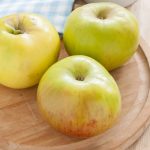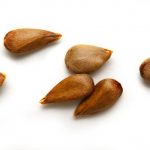
The Rose Apple, Syzygium jambos is a plant in the Myrtaceae family – the Myrtles. The plant which used to be known scientifically as Eugenia jambos L., is a largeshrub or small to medium in size tree, known to grow originally in South-east Asia, but now widely distributed in the tropics. The plant has been traditionally used for its antipyretic and anti-inflammatory properties and to treat hemorrhages, syphilis, leprosy, wounds, ulcers, and lung diseases. In Indo-China, all plant parts are employed to treat digestive tract and tooth disorders. The leaves decoction is used as antirheumatic, diuretic, and to relieve sore eye conditions (Kuiate et al., 2007; Nawwar et al., 2016).
Generally, leaf extracts of S. jambos and isolated flavonoid glycosides have shown substantial anti-inflammatory activity (Slowing et al., 1994). A study from Venezuela has reported promising anti-inflammatory and analgesic activities for the leaf extract when compared to the positive controls diclofenac and morphine, respectively (Avila-Peña et al., 2007). In another study, leaf extracts from plants grown in Pretoria, South Africa, have been subjected to bioassay guided fractionation resulting in the isolation of ursolic acid and the anacardic acid analogue, squalene (Sharma et al., 2013).
Kuiate et al. (2007) have reported antidermatophytic activity of the ethyl acetate extract of the stem bark and its isolated compounds against three dermatophyte species.
The leaves of Rose Apple contain some important medicinal compounds which include flavonol glycosides, flavonol di-glycosides, and flavones as well as ellagitannins and phenolic acids. All these compounds have antioxidant activities to different extents. That means extracts have been shown to have free radical-scavenging activity, and inhibit the damage caused by reactive oxygen species. The pomegranate also contains similar ellagitannins and its properties ally with the former.
Extracts show potent antioxidant activity in vitro in a C. elegans model. It also has good hepatoprotective potential in rats and in eukaryotic cells.
References
Avila-Peña, D., Peña, N., Quintero, L., & Suárez-Roca, H. (2007). Antinociceptive activity of Syzygium jambos leaves extract on rats. Journal of Ethnopharmacology, 112, pp. 380–385
Kuiate, J. R., Mouokeu, S., Wabo, H. K., & Tane, P. (2007). Antidermatophytic triterpenoids from Syzygium jambos (L.) Alston (Myrtaceae). Phytotherapy Research, 21, pp. 149–152
Nawwar, M., Hashem, A., Hussein, S., Swilam, N., Becker, A., Haertel, B., … Linscheid, M. (2016). Phenolic profiling of an extract from Eugenia jambos L. (Alston)-the structure of three flavonoid glycosides–antioxidant and cytotoxic activities. Die Pharmazie-An International Journal of Pharmaceutical Sciences, 71, pp. 162–168
Sharma, R., Kishore, N., Hussein, A., & Lall, N. (2013). Antibacterial and anti-inflammatory effects of Syzygium jambos L. (Alston) and isolated compounds on acne vulgaris. BMC Complementary and Alternative Medicine, 13, pp. 292.
Slowing, K., Carretero, E., & Villar, A. (1994). Anti-inflammatory activity of leaf extracts of Eugenia jambos in rats. Journal of Ethnopharmacology, 43, pp. 9–11.
Sobeh, M., Esmat, A., Petruk, G., Abdelfattah, M. A., Dmirieh, M., Monti, D. M., … & Wink, M. (2018). Phenolic compounds from Syzygium jambos (Myrtaceae) exhibit distinct antioxidant and hepatoprotective activities in vivo. Journal of Functional Foods, 41, pp. 223-231 (Article)


Never knew this was so important. Looking for it in the grocers as I read!